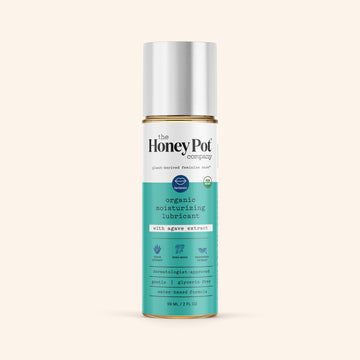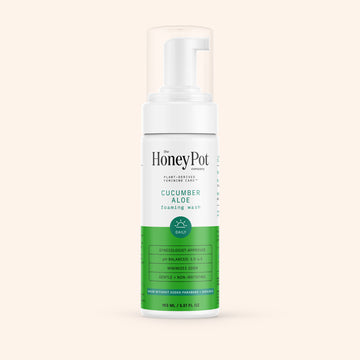As a naturopathic doctor and hormone expert, many of my patients have expressed how differently they believe their health could have been – had they been prepared for various hormonal changes. I can recall the onset of my own menses and how shocked I was by the rapid changes in my body. Looking back, I wish someone would have taken time to explain to me my hormonal changes, what to expect, and how I could better manage my health. In part one of “Understanding Hormones", I discussed the hormones specific to humans with vaginas in great detail. Now let’s learn the hormonal changes during different phases of life and the opportunities to support balancing hormones!
Hormonal changes during different phases of life:
Puberty is the period during which adolescents reach sexual maturity and are able to reproduce. The multiple emotional and hormonal changes that happen during puberty are mainly driven by increases in estradiol.
Increased estradiol impacts:
- Breast development
- Increase in weight and height (body shape, fat distribution)
- Pubic hair development
- Skin changes
- Onset of menstruation (period)
Perimenopause is the transitional phase into menopause that typically occurs in humans with vaginas in their 40s to early 50s. Perimenopause can start as early as 35 years old and last up to ten years.
Hormonal changes include:
- Increased estrogen levels (which decreases as person approaches menopause)
- Decreased progesterone levels
- Decreased testosterone levels
- Symptoms may include: mood swings, irregular periods, heavy and/or frequent bleeding, weight gain, decreased libido, urinary symptoms, hot flashes and night sweats, vaginal dryness, brain fog and memory issues
Menopause is the absence of periods for at least 12 consecutive months (one year). The onset is between ages 45 - 55, but the average age is 51.
Hormonal changes include:
- Decreased estrogen levels
- Decreased progesterone levels
- Decreased testosterone levels
- Elevated FSH and LH levels
- Symptoms may include: hot flashes, vaginal dryness, night sweats, chills, sleep disturbances, mood changes, weight gain, and slowed metabolism
Pregnancy
Hormonal changes include:
- Increased human chorionic gonadotropin (hCG) [this is the hormone detected on a pregnancy test]
- Increased estrogen and progesterone levels to help maintain a healthy pregnancy.
- Symptoms may include: missed periods, breast changes (increased tenderness, swelling, lactation), nausea, vomiting, increased urination, increased appetite, and fatigue
Postpartum begins after childbirth.
Hormonal changes include:
- Decreased estrogen levels: may cause mood changes, fatigue, vaginal dryness, and sleep disturbances
- Increased oxytocin levels: decreases postpartum bleeding, supports breastfeeding (milk release), and encourages parent-infant bond
- Increased prolactin levels: supports breastfeeding (milk release)
How to balance hormones:
Most people are able to balance their hormones naturally, through different lifestyle changes. However, at times, pharmaceutical (prescription medications) and surgical interventions may be necessary. As a naturopathic doctor, I attempt to use the least invasive methods of treatment first when treating hormones. This usually requires addressing digestive and liver concerns (for appropriate hormone breakdown and clearance), diet, physical activity, and assessing for potential environmental toxins. These interventions include:
Supporting the gastrointestinal system by:
- Identifying and eliminating food allergies
- Reducing inflammation
- Addressing gut dysbiosis (microbial imbalance in the intestinal tract)
- Addressing conditions and symptoms such as: chronic diarrhea, constipation, bloating, IBS (inflammatory bowel syndrome), SIBO (small intestinal bacterial overgrowth), etc.
Supporting the adrenal glands and regulating the blood sugar by:
- Reducing stress
- Getting adequate sleep
- Addressing high blood sugar (prediabetes, diabetes)
- Consuming adequate protein
- Decreasing sugar intake
- Increasing fiber intake
- Consuming cruciferous vegetables
- Supplementing with omegas and probiotics
- Exercising regularly to maintain moderate weight
- Please note: just because many herbs (botanicals) and supplements are easily accessible, that does not mean that they are safe and effective for everyone! Please consult with myself or another licensed naturopathic doctor before pursuing any herbal treatments.
- Reducing exposure to plastics, food dyes, perfumes, and pesticides
- Using clean, organic personal care products (be sure to check out the various products by The Honey Pot Co.)
For more information about hormones or to find a culturally competent healthcare provider, visit our partner Health in Her HUE®. Health in Her HUE ® is a digital network of culturally sensitive healthcare providers, evidence-based health content, and community support.
REFERENCES:
Endocrine Society. (2022, January 24). Reproductive hormones. Endocrine Society. Retrieved May 6, 2023, from https://www.endocrine.org/patient-engagement/endocrine-library/hormones-and-endocrine -function/reproductive-hormones
Hormones: What they are, Function & Types. Cleveland Clinic. (n.d.). Retrieved May 6, 2023, from https://my.clevelandclinic.org/health/articles/22464-hormones






